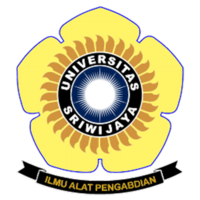KemampuanAkumulasi Merkuri oleh Bakteri yang Diisolasi dari Tailing Tambang Emas Skala Kecil
Abstract
Nurfitriani et al, 2019. Mercury Accumulation Ability of Bacteria Isolated from Small-Scale Gold Mine Tailing. pp. 366-375.
Heavy metal pollution in the soil due to small-scale gold mining activities (ASGM) is responsible for 37% of mercury (Hg) pollution to the environment in the form of tailings . This pollution causes mercury enrichment in agricultural land and crops above the safe limits. This study aimed to isolate heterotrophic bacteria which can accumulate mercury from small-scale gold minetailings in Sekotong District, West Lombok. In this study, mercury resistant bacteria were obtained through a series of on Nutrient Agar medium. The obtained isolates were identified based on the colony morphology (the Bergey Manual Determinative system), gram staining test, biochemical test and growth curve test. Hg accumulation ability test was carried out on liquid Nutrient Broth (NB) medium containing 50 mL + HgCl2( 10 ppm, 20 ppm, and 30 ppm). The ability of isolates to accumulate Hg was also tested on gold mine tailings with an incubation method for 4 weeks. The results showed that four isolates of mercury-resistant bacteria were isolated, namely Brevundimonasvesicularis, Nitrococcusmobilis, Fusobacterium aquatile, and Fusobacterium necrogenes. Two of four isolates obtained, Fusobacterium aquatile and Brevundimonasvesicularis, could accumulate Hg highest in tailing medium.Brevundimonasvesicularis had the highest Hg accumulation ability which was approximately 1.68, 2.08, and 2.17 ppm Hg at 10, 20, and 30 ppm Hg treatment, respectively. Based on this study, Fusobacterium aquatile and Brevundimonasvesicularis have the potential to be used in bioremediation of soil contaminated with mercury.
Heavy metal pollution in the soil due to small-scale gold mining activities (ASGM) is responsible for 37% of mercury (Hg) pollution to the environment in the form of tailings . This pollution causes mercury enrichment in agricultural land and crops above the safe limits. This study aimed to isolate heterotrophic bacteria which can accumulate mercury from small-scale gold minetailings in Sekotong District, West Lombok. In this study, mercury resistant bacteria were obtained through a series of on Nutrient Agar medium. The obtained isolates were identified based on the colony morphology (the Bergey Manual Determinative system), gram staining test, biochemical test and growth curve test. Hg accumulation ability test was carried out on liquid Nutrient Broth (NB) medium containing 50 mL + HgCl2( 10 ppm, 20 ppm, and 30 ppm). The ability of isolates to accumulate Hg was also tested on gold mine tailings with an incubation method for 4 weeks. The results showed that four isolates of mercury-resistant bacteria were isolated, namely Brevundimonasvesicularis, Nitrococcusmobilis, Fusobacterium aquatile, and Fusobacterium necrogenes. Two of four isolates obtained, Fusobacterium aquatile and Brevundimonasvesicularis, could accumulate Hg highest in tailing medium.Brevundimonasvesicularis had the highest Hg accumulation ability which was approximately 1.68, 2.08, and 2.17 ppm Hg at 10, 20, and 30 ppm Hg treatment, respectively. Based on this study, Fusobacterium aquatile and Brevundimonasvesicularis have the potential to be used in bioremediation of soil contaminated with mercury.
Full Text:
PDFArticle Metrics
Abstract view : 428 timesPDF - 925 times
Refbacks
- There are currently no refbacks.

